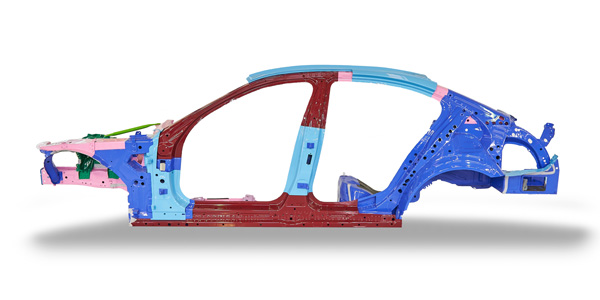
The United States isn’t the only nation grappling with the rising cost and complexity of repairing today’s high-tech vehicles.
U.K.-based Thatcham Research said there’s a “repair storm brewing” – stemming from the proliferation of advanced driver-assistance systems (ADAS) – and OEMs need to “urgently engage” with the collision repair industry in the United Kingdom “to halt spiraling costs.”
“The average repair bill has risen by 32 percent over the last three years,” said Peter Shaw of Thatcham Research. “This has been driven by the repairability of parts such as headlamps, increasing complexity of vehicle materials and technology and the rising cost of spare parts, influenced to some extent by currency fluctuations. Vehicle manufacturers must bring these costs under control.”
Shaw noted that the cost to recalibrate a windshield-mounted ADAS in Great Britain ranges from £0 to £700 (approximately $905) – across car manufacturers and often across similar sensors and technology.
“This is unacceptable,” Shaw added. “Unless urgently addressed, these costs will challenge the current model of a no-claims bonus being unaffected by a [windshield] repair or replacement.”
Another challenge is the fact that vehicles rolling off OEM assembly lines no longer consist of just mild steel.
“The rising use of a mix of new materials in modern cars is leading to more intrusive repairs,” asserted Thomas Hudd, operations manager at the Thatcham Research Repair Technology Center. “This means that where we were once able to partially replace a panel, we now need to replace it in its entirety. This is especially true of aluminum panels, which are challenging the repair industry as it is stiffer and harder to reshape than steel.”
Top Five Repair Challenges
According to Thatcham Research, these are the top five challenges for collision repairers in the United Kingdom today:
- ADAS systems
- Vehicle complexity
- Paint and panels – Vehicles now feature textured paint, or crystal finishes, and refinish on multiple materials.
- Headlamps – Use of LED and LED matrix and laser (and soon OLED lighting) continues to increase. This technology often costs considerably more than a bulb headlamp, and some might be impossible to repair rather than replace.
- Electrified powertrains – “The diverse range of technologies and tools required [to repair electrified powertrains] are not acceptable investments to expect of a body shop,” the research firm asserted.
All of this complexity creates another challenge for U.K. collision repairers: attracting high-caliber technicians who see the repair industry as a career destination. Obviously, U.S. collision repairers are struggling with the same challenge.
“There is still much to be done to ensure that the right people choose a career in this industry,” said Dean Lander, head of repair sector services at Thatcham Research. “Repairers need a new set of skills to meet the demands of the body shop of the future. Technical expertise in diagnostics and calibration has become as vital as expertise in repairing and refinishing the physical hardware of a car. We must portray a fresh image to recruit the right people and help them to develop these new skills for body shops, as well as developing leadership skills to aid long-term retention.”
Thatcham Research addressed these and other issues at its June 6 Repair Focus event, which focused on the skills, equipment and leadership needed for the “Body Shop of the Future.”













